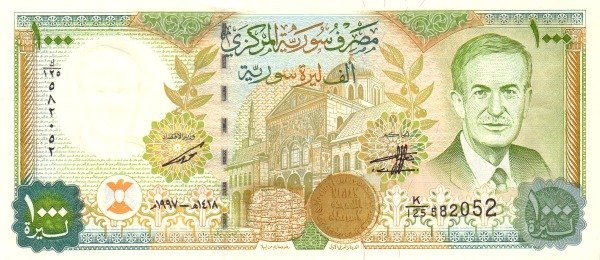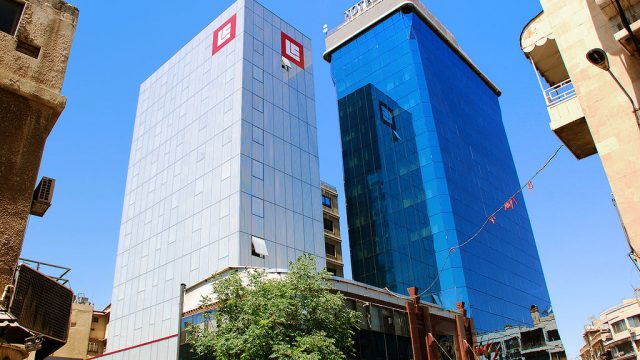This article is part of a dossier in partnership between SyriaUntold and Orient XXI, exploring the consequences of the devastating earthquake that struck Turkey and Syria in February 2023.
On February 6, 2023, Syria experienced a devastating earthquake that resulted in the loss of approximately 6,000 lives and left over 12,000 injured. This catastrophe compounded the vulnerability already faced by the Syrian population and led to significant destruction and material damage. Consequently, the earthquake exacerbated socio-economic challenges within the society, causing inflation and a rise in unemployment. This article examines the socio-economic impact of the earthquake on the Syrian population.
Human Impacts and Destruction
The earthquake had a profound impact on more than 8.8 million individuals residing in the governorates of Idlib, Aleppo, Latakia and to a lesser extent Hama and Tartus. Particularly affected were those residing in areas controlled by the Turkish army and the Salafist jihadist armed group, Hay'at Tahrir Sham (HTS), with a death toll surpassing 4,500 dead and over 8,700 injured. Thousands were left homeless, and more than 10,600 buildings were either partially or completely destroyed. Unfortunately, international humanitarian aid was limited and very slow to reach in these areas, unlike regions under the control of the Syrian regime, which received substantial aid from over 30 states. Concurrently, the Syrian regime sought to consolidate its authority by attempting to control or influence the organization and distribution of humanitarian assistance across the country.
According to a report by the World Bank (WB), earthquake resulted in direct material damage estimated at nearly $5.1 billion (with a range of $2.7 billion and $7.9 billion due to inherent uncertainties).
In May 2023, the UN announced that the preliminary assessment of post-earthquake recovery needs in Syria had estimated nearly $9 billion in damage and losses and $14.8 billion in recovery needs over the next three years.
Liberalization and Conflict in the Syrian Economy
22 December 2016
The Syrian Business Elite: Patronage Networks and War Economy
24 September 2016
In terms of material damage, the housing sector bore the brunt of this destruction, with the WB report indicating that over 87,000 housing units, equivalent to 4.8% of Syria's total housing stock, were either partially damaged or completely destroyed. The value of the damaged or destroyed property amounted to nearly $881 million, approximately 10% of the country's GDP. The reconstruction and economic recovery requirements are estimates at around $7.9 billion. Furthermore, the earthquake led to the loss of employment for over 170,000 workers. The International Labor Organization (ILO) reported that more than 35,000 micro, small, and medium-sized enterprises (MSMEs) were affected. As a result, the temporary unemployment resulted in a loss of labor income of at least $5.7 million per month. In heavily impacted areas like Aleppo, numerous factories and small businesses ceased operations in the weeks following the earthquake due to the forced displacement of local populations to safer regions and concerns about building collapses. Consequently, the livelihoods of many workers were jeopardized.
The earthquake is expected to have a significant impact on Syria's GDP in 2023, with an estimated decline of approximately 5.5%, according to the World Bank. It is important to note that Syria's GDP has already decreased by more than half between 2010 and 2020 and experienced a decline of around 12% in the last three years.
Rising inflation and cost of living
The devastating earthquake in February also had economic consequences in areas under the control of the Syrian regime. Following the disaster, prices of essential goods, including food, rose by approximately 30%, adding further strain on the Syrian population. The government's response to these price increases was inadequate, generating significant criticism among the people. As the holy month of Ramadan approached, the prices of basic necessities and other products surged even higher, ranging from 50% to 100%. For instance, clothing store owners in Aleppo increased their prices by 50%, on top of the already tripled prices since Ramadan 2022.
Following the disaster, prices of essential goods, including food, rose by approximately 30%, adding further strain on the Syrian population.
These price hikes occurred within a broader context of ongoing economic deterioration. In 2023, the United Nations estimated that around 15.3 million people in Syria would require humanitarian assistance, including 2.1 million displaced individuals, while over 90% of the population lived below the poverty line. Inflation rates have soared over the past decade, reaching approximately 113.5% to 114% in 2020, 101% to 111% in 2021, and 55% to 55.7% in the first half of 2022. Additionally, inflation rates increased significantly in areas controlled by HTS and the Turkish army in northwestern Syria due to the depreciation of the Turkish lira.
These high inflation rates were accompanied by the continuous devaluation of the Syrian pound due to structural reasons, and a lack of economic policies to mitigate the real income losses for the population. This severely impacted the purchasing power of the people, significantly increasing the cost of living. In 2022, the average cost of living for a Syrian family of five in Damascus rose from SYP 2,026,976 (equivalent to USD 802.8 at the official exchange rate of SYP 2.525/USD at that time) in January 2022 to SYP 4,012,178 (equivalent to USD 887.26 at the official exchange rate of SYP 4.522/USD at that time) in January 2023. The minimum cost of living during the same period increased from SYP 1,266,860 to SYP 2,507,611 (equivalent to USD 501.7 and USD 554.5 respectively), representing an increase of more than 97.9% over the year. However, the minimum wage remained unchanged at SYP 92,970 (equivalent today to USD 14.3 at the official exchange rate of 6.532 SYP). More than half of public sector employees earn less than SYP 200,000 (USD 30.6) per month, while the average monthly wage in the private sector was estimated between SYP 300,000 and SYP 500,000 (USD 46 to 77). By the end of March 2023, the cost of living for a Syrian family had further risen to 5.60 million SYP (861.5 USD). In addition to the impact of the ongoing war, this economic situation prompted many highly skilled workers to migrate in search of better living and working conditions.
In 2023, the United Nations estimated that around 15.3 million people in Syria would require humanitarian assistance, including 2.1 million displaced individuals, while over 90% of the population lived below the poverty line.
The occasional bonuses provided by the Syrian government did little to alleviate the immense suffering of workers and the working class in Syria. The most recent bonus allocation occurred in mid-April 2023, with a financial provision of 150,000 SYP (23 USD) for pensioners and state employees, including the military.
Diaspora remittances as a survival tool
Faced with these challenging circumstances, workers are seeking alternative sources of income to supplement their daily and monthly expenses. In the public sector, an increasing number of employees are taking on additional jobs after their regular shifts, while the cost of bribes is also on the rise. Many workers rely on humanitarian aid, but more significantly, they depend on remittances from the Syrian diaspora.
Remittances play a crucial role as a significant source of foreign exchange inflows to Syria. Prior to 2011, remittances amounted to approximately $1.6 billion. In recent years, remittances have reached several billion dollars annually and have become a vital means of subsistence for large segments of the population over the past decade. In the aftermath of the earthquakes, numerous remittances were sent by the Syrian diaspora across Syria, primarily to assist families and relatives in coping with urgent needs. Money transfer offices like Western Union in areas under the regime's control witnessed long queues of people seeking to collect money sent by their relatives outside the country. Informal "Hawala" networks in opposition-held areas, beyond the Syrian regime's jurisdiction, also experienced a substantial influx of funds, such as in Afrin and Idlib. In Aleppo, al-Watan newspaper estimated that one-third of the city's population relies on diaspora remittances.
Conclusion
While earthquakes are natural disasters, the severity of this new human catastrophe in Syria can be attributed primarily to the actions of the Syrian regime. The regime laid the groundwork with the destruction it caused during its war against significant portions of the population, its economic policies, and its corruption. The regime also politicized humanitarian aid, notably by impeding or reducing its distribution in territories beyond its control.
Likewise, sanctions and external economic shocks, such as Russia's invasion of Ukraine since February 2022 and the economic crisis in Lebanon since October 2019, undoubtedly contribute to the country's economic hardships, including high inflation and the impoverishment of the population. However, it is the Syrian regime's policies that bear the primary responsibility for the current situation and the economic misery of 90% of the population in Syria. Alongside its war and repression against large sections of the Syrian population and the destruction of infrastructure, the regime pursued neoliberal economic policies, including measures like trade liberalization and corrupt practices that favored networks of traders affiliated with the presidential palace, as well as austerity measures. All of these factors prevented any effective action to combat inflation and halt the devaluation of wages and the population's purchasing power.
It is the Syrian regime's policies that bear the primary responsibility for the current situation and the economic misery of 90% of the population in Syria.
Several measures could be implemented to address these issues, such as price controls and state interventions in import channels, while ensuring that wages are indexed to inflation rates. However, without a grassroots social movement exerting pressure on the Syrian regime at a national level, no significant improvement in the lives of the population will be achieved. This situation underscores the need to build a progressive and democratic alternative with an inclusive socio-economic program that serves the diverse popular classes.






